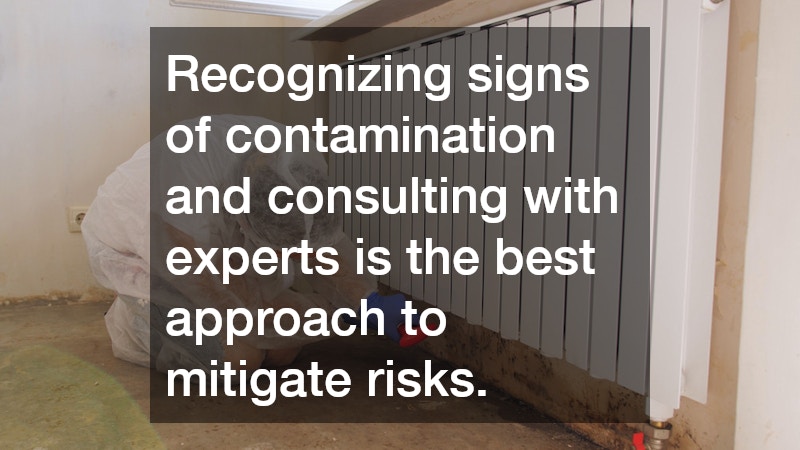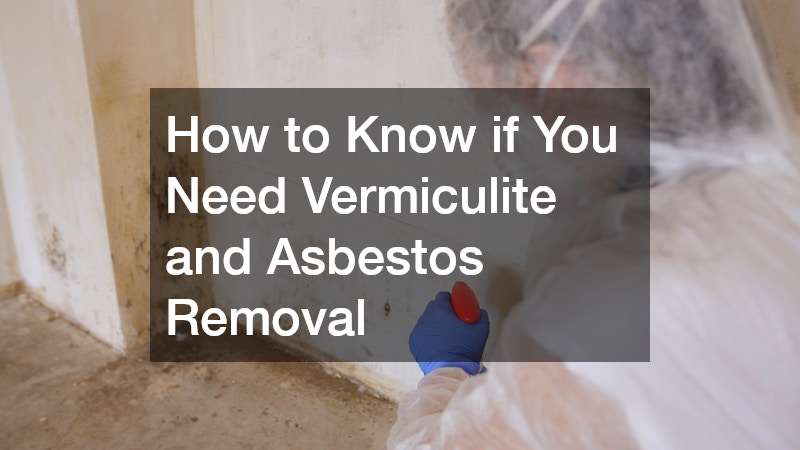In many homes, vermiculite and asbestos lurk as hidden hazards due to their widespread historical use as construction materials. Understanding when vermiculite and asbestos removal is necessary is vital for maintaining a safe living environment and preventing potential health risks associated with prolonged exposure to these substances. While once praised for their fire-resistant and insulating properties, vermiculite and asbestos are now recognized for the serious dangers they pose when disturbed.
Their prevalence in older homes makes it critical for homeowners to stay vigilant, especially during renovations or maintenance work that may inadvertently release harmful fibers into the air.
What Are Vermiculite and Asbestos, and Why Are They Dangerous?
Defining Vermiculite and Asbestos
Vermiculite is a natural mineral that expands when heated, and it was commonly used in attic insulation due to its fire-resistant properties. Asbestos is a group of naturally occurring fibrous minerals known for their durability and resistance to heat, which led to their use in various building materials like insulation, shingles, and tiles. Although useful, vermiculite and asbestos can pose significant health hazards. When asbestos-containing materials degrade, they release fine fibers into the air, and inhalation of these fibers can lead to serious health issues.
Health Risks Associated with Exposure
Prolonged exposure to asbestos can cause a range of health issues, including asbestosis, lung cancer, and mesothelioma, a particularly aggressive form of cancer. Furthermore, vermiculite sourced from certain mines might contain asbestos fibers, compounding the health risks. Even short-term exposure to high levels of asbestos can be harmful, with symptoms potentially taking years to manifest. This is why identifying and mitigating vermiculite and asbestos exposure is crucial for the long-term health of homeowners.
How to Identify Vermiculite and Asbestos in Your Home
Signs and Symptoms of Contamination
Identifying the presence of vermiculite and asbestos in your home often starts with recognizing materials installed prior to the 1980s, when their use was more prevalent. Visible signs include degraded insulation in attics or around pipes, and tiles or siding with suspiciously aged appearances. A key indicator of possible asbestos presence is the flaking or crumbling of material, which may release fibers into the air. It’s crucial to approach these areas with caution and to avoid disturbing any suspicious materials.
Professional Inspection and Testing Methods
While visible clues can hint at contamination, only professional inspection and testing can confirm the presence of asbestos or vermiculite. Certified experts use specialized testing methods, such as polarized light microscopy and transmission electron microscopy, to detect and measure asbestos fiber levels in samples. Hiring professionals not only provides reliable results but also ensures that the inspection process minimizes fiber release risks. This approach provides homeowners with peace of mind and legal assurance when dealing with potentially hazardous materials.
Do You Need Professional Removal Services?
DIY Risks and Safety Considerations
Attempting to remove vermiculite and asbestos without professional experience poses significant health risks. Disrupting asbestos-containing materials can inadvertently release dangerous fibers, which require specialized equipment and safety measures to handle safely. The financial costs of professional services are far outweighed by the safety they assure. Homeowners are strongly discouraged from DIY removal attempts due to the complexity and potential hazards involved.
When to Call in an Asbestos Abatement Professional
When there is confirmed or suspected contamination, the decision to call an asbestos abatement professional should be made. Professionals assess the extent of contamination and provide comprehensive solutions, ensuring compliance with safety regulations. In situ, where materials are fully intact and unlikely to be disturbed, monitoring rather than immediate removal might be suggested by professionals. However, if damage is evident, prompt removal by certified experts is crucial to prevent health risks.
Understanding the Vermiculite and Asbestos Removal Process
The Steps Involved in Safe Removal
The safety of vermiculite and asbestos removal often begins with sealing off contaminated areas to prevent fiber dissemination. Subsequently, professionals use wet methods and HEPA-filtered vacuums, systematically removing materials without generating airborne fibers. The removal process ends with a thorough decontamination and air monitoring to assure no residual fibers remain. Professionals also handle disposal, adhering to environmental regulations for safe and compliant waste management.
Preparing Your Home and Family for Abatement
Before removal starts, it’s essential to prepare the home and family by creating a containment plan and temporarily relocating if necessary. It is paramount to ensure minimal exposure to ongoing work for household members. Clear communication with the abatement firm allows for a coordinated approach, minimizing disruption and guaranteeing safety. Additionally, planning for post-abatement cleaning can expedite the return to normalcy after removal.
Understanding the dangers of vermiculite and asbestos, and knowing when professional vermiculite and asbestos removal is essential, safeguards health and ensures compliance with safety standards. Recognizing signs of contamination and consulting with experts is the best approach to mitigate risks. For homeowners suspecting the presence of these hazardous materials, decisive action is crucial. Armed with the knowledge of detection, risks, and abatement, informed decisions can protect households for years to come. Ultimately, proactive awareness and professional support are key to protecting your home and family from these invisible threats. By investing in proper inspection and abatement, homeowners can restore peace of mind and assure their living spaces remain safe, healthy, and free from legacy construction hazards.



